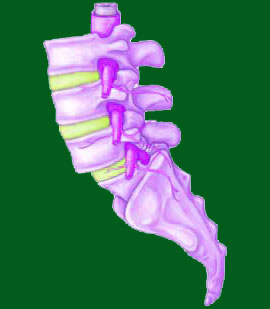
Do you understand all the factors involved in spondylolisthesis classification? If you have been diagnosed with vertebral listhesis, it is in your best interest to get a good education on the facts of the condition, since this knowledge is proven to improve treatment results. A learned and informed patient tends to recover faster and better than a clueless one.
Spondylolisthesis can be classified according to several different parameters. Some of the identifying characteristics of listhesis can include its causation, location and its clinical severity, making the classification process rather complex for laymen to understand. However, we can help!
This dialog details the classification of vertebral migration conditions in the human spinal column.
Spondylolisthesis Classification by Location
The first characteristic that can be classified in a particular case profile of vertebral listhesis is the location where the condition resides. In most cases, this will be the lumbar spine, most often at L5 or L4. Typical listhesis can be called lumbar spondylolisthesis, but just the word spondylolisthesis usually refers to lumbar location unless otherwise specified.
Cervical spondylolisthesis occurs in the neck and is the second most common location for vertebral migration to occur, typically in the mid to lower cervical spinal levels.
Thoracic spondylolisthesis is very rare, since the ribs reinforce the thoracic spine. The thoracic presentation tends to appear only in cases of truly severe injury or in uncommon structural defects in the middle and upper back regions.
Furthermore, vertebral bones can migrate towards the front or the rear of the anatomy. When they migrate frontwards, which is much more common, the condition can be called anterolisthesis. When they migrate rearwards, the condition is known as retrolisthesis.
Classifying Listhesis by Causation
Sometimes, there is a word added to spondylolisthesis that helps to identify its origin and causative process. The most common is certainly isthmus spondylolisthesis, which is caused by a defect in the pars interarticularis fractures allowing the vertebral bone to migrate forward or backwards.
Degenerative spondylolisthesis refers vertebral slippage to a condition that originates due to deterioration of the spinal structures over time. This often involves changes to the intervertebral discs, the facet joints and the vertebral bodies themselves.
Traumatic spondylolisthesis refers to vertebral slippage issues that are directly caused by trauma. This can involve a car accident, fall, act of violence or even be the consequences of a spinal operation.
Spondylolisthesis Classification by Severity
Finally, and most importantly, the last type of classification that can be applied to listhesis describes the clinical severity of the condition. This classification is usually called grading and we cover the topic of spondylolisthesis grading in great detail in our dedicated article on the subject.
To summarize the grading, there are 5 different levels used:
Grade 1 is the most common and least significant. Most cases do not require treatment and will not be symptomatic. However, all listhesis should be monitored for progression.
Grade 2 is still generally not painful and rarely require treatment. Upper end cases of grade 2 might require professional care in infrequent circumstances.
Grade 3 cases are significant and usually require some type of treatment. However, this is not a rule and some patients live normal lives free from pain with grade 3 listhesis.
Grade 4 cases are virtually universally symptomatic and can lead to spinal instability. Most listhesis surgeries are used for upper grade 3 and 4 conditions and typically involve multilevel spinal fusion.
Spondyloptosis refers to a complete migration of more than 100% from typical vertebral orientation. These cases often come from trauma and must be treated as emergencies.
Spondylolisthesis > Spondylolisthesis Diagnosis > Spondylolisthesis Classification



